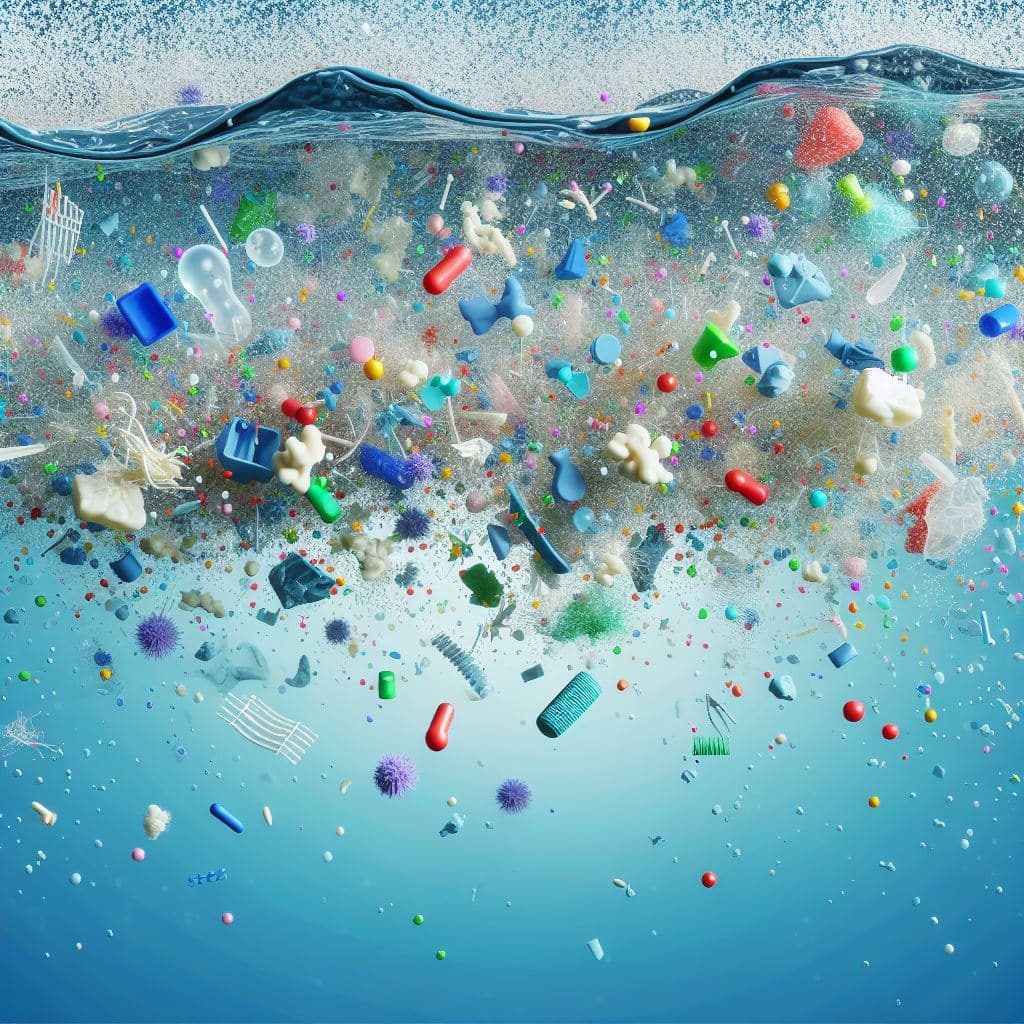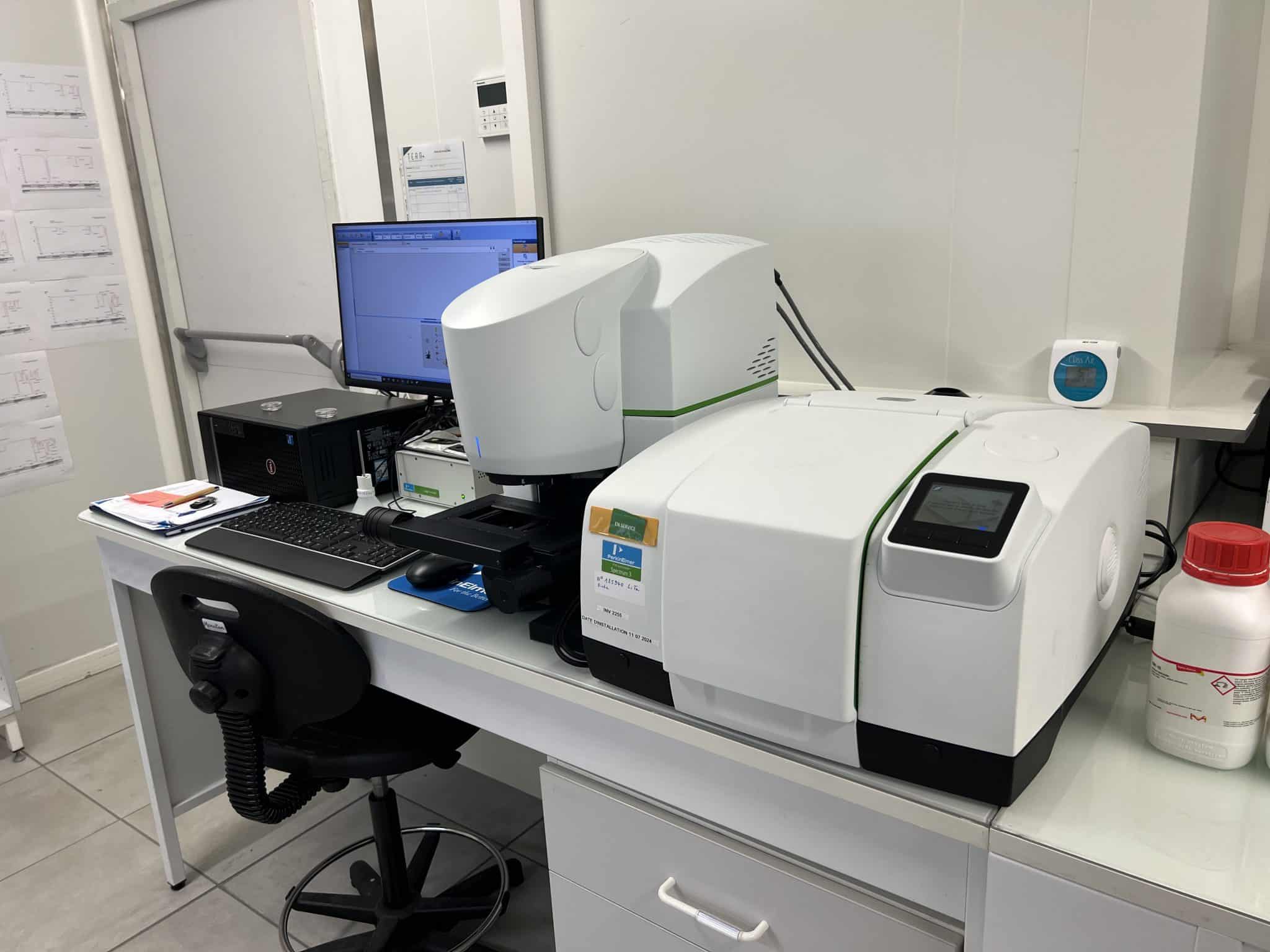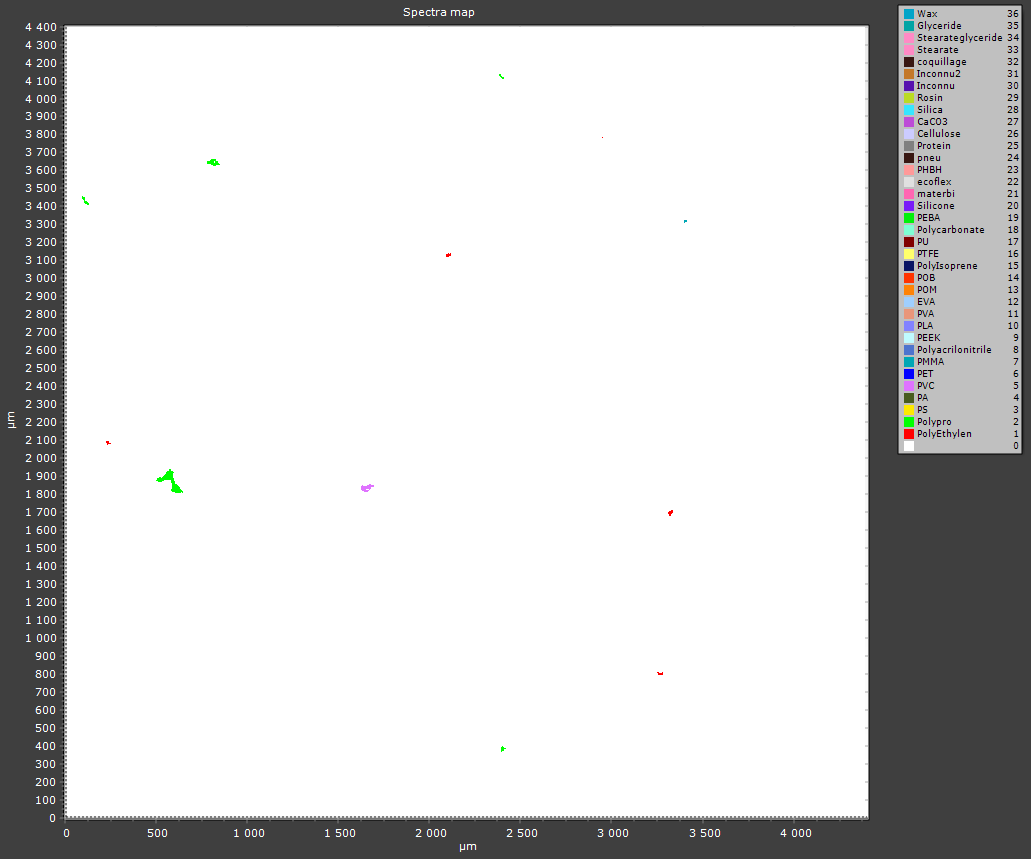
Invisible yesterday, analyzable today : spotlight on microplastics
What are microplastics ?
Microplastics are tiny particles of synthetic polymers, generally defined as less than 5 millimeters in size. They have become a major concern due to their ubiquitous presence in the environment and their potential effects on human health and ecosystems.

There are two types of microplastics :
- Primary microplastics, which are intentionally manufactured in a reduced size : this is the case of microbeads and flakes in cosmetics or cleaning products, industrial granules, etc.
- Secondary microplastics, which result from the degradation of larger plastics under the effect of sun, wind, water or mechanical wear. Examples include synthetic textile fibers, fragments of plastic bags, tire dust, etc.
Where do we find microplastics in our environment ?
Secondary microplastics make up the majority of microplastics present in the environment. They are found in :
- In oceans, soil, food, drinking water and air.
- They can be transported over long distances by wind or ocean currents.
Below is a scheme illustrating the main sources and pathways of microplastics in the environment.
Why are micoplastics a concern for our health and ecosystems ?
The toxicity of a plastic particle depends largely on its size, shape, composition and ability to bind with other chemicals present in the ecosystem. Larger, more rigid particles can lodge in the intestines of consumers and cause intestinal obstruction, while smaller particles and fibers (nano) can have metabolic effects.
The growing production of plastic over the last century has led to an increase in plastic waste, resulting in global contamination by microplastics. Resistant to degradation, plastics can persist in the environment for decades, posing risks to flora and fauna.
Particles can be ingested, inhaled or – for sufficiently small nanoplastics – absorbed through the skin; their toxicity depends on their size, shape and composition.
Microbial communities (biofilms) can also form on the surface of these particles. These biofilms may contain pathogens and other toxic substances, increasing toxicity and adverse effects on the ecosystem population.
How to measure microplastics in the lab ?
ISO standards play a crucial role in standardizing microplastics analysis methods, but there are currently very few of them.
- ISO 24187: 2023 : Principles for the analysis of microplastics in the environment including air, including particle size classification and sample preparation.
- ISO 16094-2 and ISO 16094-3 : Methods for the analysis of microplastics in water, using FTIR and Raman spectroscopy, as well as thermo-analytical techniques such as pyrolysis-GC-MS.

IR spectroscopy
European regulations on the analysis of microplastics in drinking water include specific recommendations for the use of infrared (IR) or Raman optical micro-spectroscopy. These methods are preferred for their reliability in detecting low concentrations of microplastics : “These low levels are more reliably detectable by IR or Raman optical micro-spectroscopy methods than by thermo-analytical methods.” Therefore this method was preferred by the commission for microplastics analysis.
What does TERA Environnement offer for the detection and analysis of microplastics ?
TERA Environnement has been offering infrared microscopy analysis of microplastics in various environmental media since 2024 : air, water, soil.
TERA Environnement’s initial focus was on monitoring construction sites and coastal landfill reclamation work, with the objective of “zero plastic waste at sea”. It began by analyzing microplastics in ambient air using passive sampling via dipsticks.
In order to master all the matrices involved in the study of coastal landfills, microplastic analysis was deployed in surface water, groundwater and seawater.
The analysis of microplastics in soils, a logical follow-up to the site survey, is carried out with the help of a partner laboratory for sample pre-treatment.

Gauge for sampling microplastics
in ambient air
At the same time, TERA Environnement has developed the analysis of microplastics by infrared microscopy on the other aerial environments that the laboratory is used to treating.
The European CSRD directive calls for the evaluation of all microplastic discharges from the industries concerned; TERA Environnement therefore offers analysis of microplastics in atmospheric emissions.
Assessment of workers’ exposure to microplastics is also offered by TERA Environnement.
It’s important to emphasize that this critical purification stage requires highly specialized expertise, which our team has developed and perfected over the years, thanks to the wide range of samples we have analyzed.

IR image of a sample containing
microplastics

TERA Environnement has over 20 years’ experience in air analysis and contamination control.
Consult our analysis, sampling media and equipment rental services
Do you have any questions or do you need a quote? Contact us to find out more about our analysis services.
